This August, we feature passionate Singaporeans who are preserving our food culture and serving up their own narratives around local fare. One of these food champions is Pamelia Chia, a Singaporean culinary teacher and food writer based in the Netherlands.
Text: Amy Van
With a background in food science and cooking in professional kitchens, Pamelia is passionate about Asian culinary traditions and providing a platform for cooks from the region to share their knowledge. Her first cookbook, Wet Market to Table, is a guide to navigating Singapore’s wet markets. Her second cookbook, Plantasia, celebrates Asia’s rich history with vegetables. Both cookbooks have achieved bestseller status in Singapore. Apart from her books, she writes Singapore Noodles, a weekly Asian food newsletter.
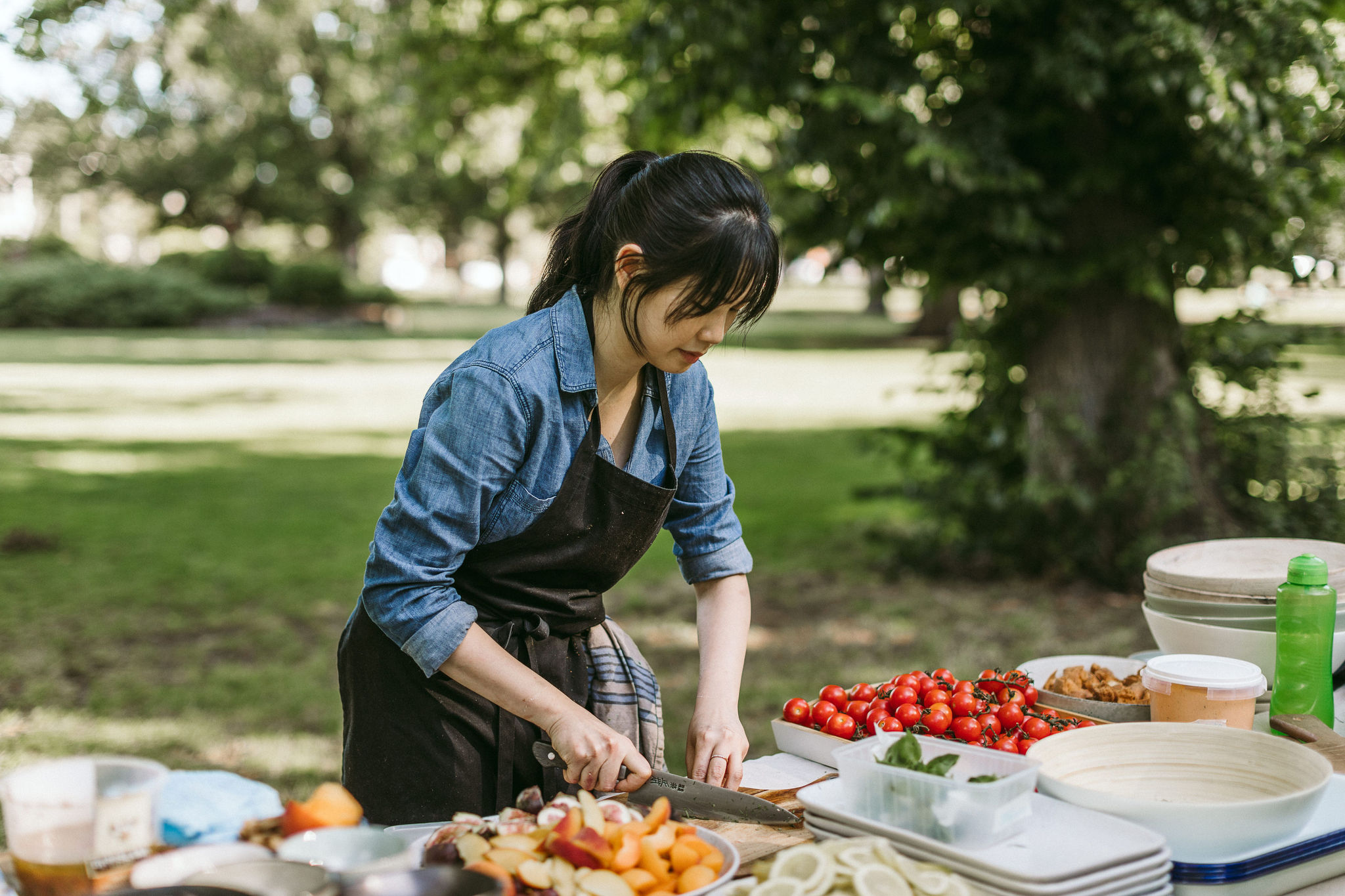
Was your love for Singaporean cooking something you grew up with, or did it develop later in life?
When I was a child, my interest in cooking was sparked by watching Yan Can Cook on television while waiting for the school bus in the afternoons. But when I joined my mother and grandmother in the kitchen, I quickly became disheartened by the detailed recipes and precise measurements. My family are not ones to mince their words, and each time I made a dish based on what they taught me and heard that it missed the mark, I was left feeling discouraged. Some people thrive under this kind of direct instruction, but I wasn’t one of them. I needed detail, structure, and encouragement to really learn.
That’s what drew me to European cooking and baking. The recipes in those cookbooks were clearly codified and well explained — and since my family had little experience with these cuisines or with Western desserts, I was spared their critique, which might have otherwise discouraged me. I didn’t seriously explore Asian cooking until my 20s, when I was working at a European restaurant. My chef, a religious man who often went on retreats in different parts of Asia, would occasionally prepare regional dishes like khao soi or raw eggplant salad he had discovered on his travels for our staff meals. It shifted the way I saw Asian food — revealing it as an exciting, diverse world beyond the typical pad Thai or pineapple fried rice. Around the same time, my boyfriend (now husband), an avid home gardener, would share the surplus Asian produce from his garden with me. It made me realise how little I knew about ingredients from my own heritage. These experiences ultimately led me to work at Candlenut — the first step in my journey into Singaporean cooking.
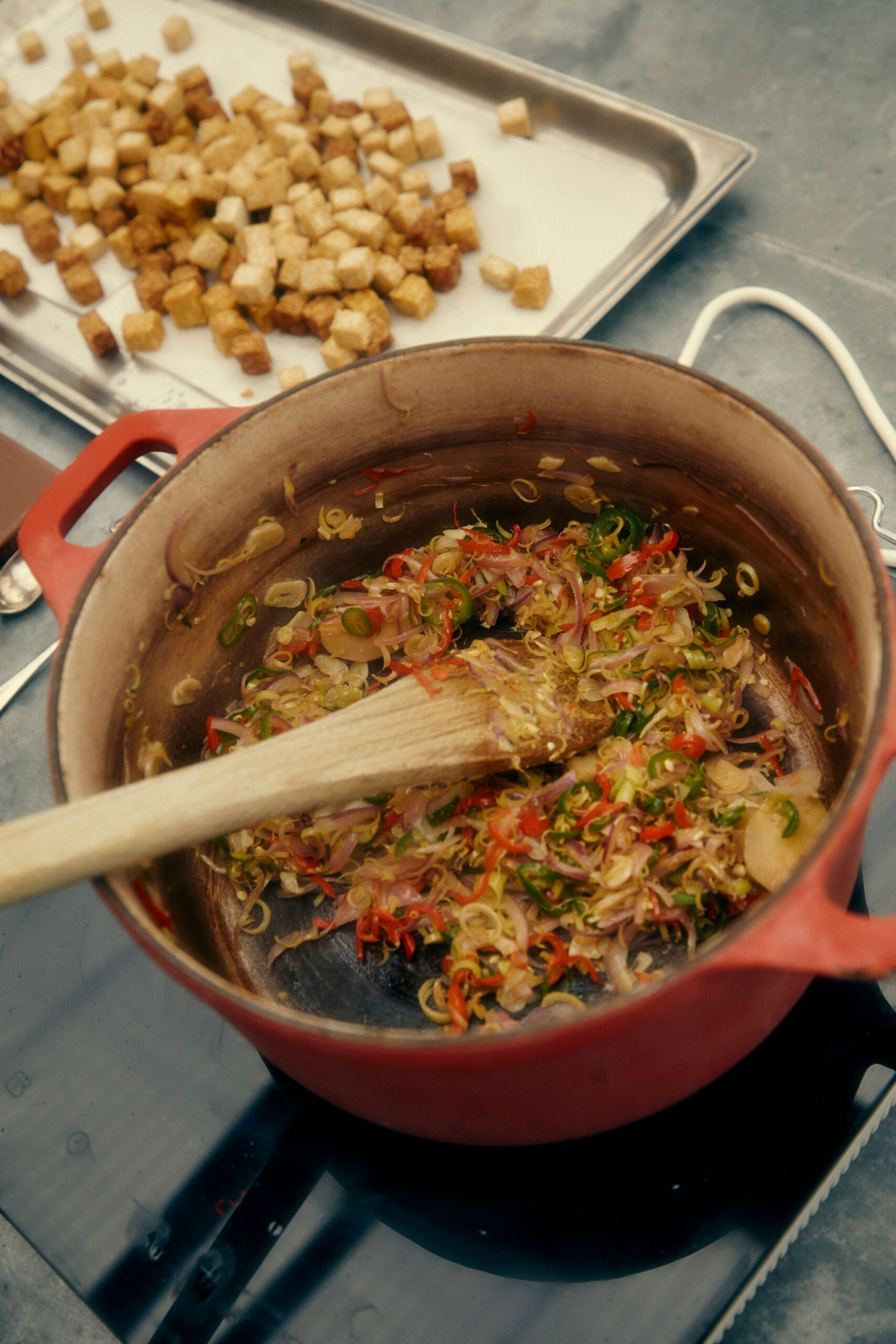
What are some of your most vivid food memories from childhood? Any particular dishes or customs that stayed with you?
When I was young, being a passionate eater was a core part of my identity — long before I ever thought of myself as a cook. My Cantonese grandfather had a saying: in life, one must work hard, but one must also eat well. My mother and her extended family nurtured in me the virtue of being an adventurous eater. Many of my childhood food memories revolve around navigating fish heads to reach the gelatinous lips or prized cheeks; learning to enjoy duck tongues by stripping the bones from the tender muscle in my mouth and spitting them out like little bullets; and relishing the textures of off-cuts like pig stomach and pig ears. While other children might have found these foods squeamish or strange, I wore my willingness to eat them like a badge of honour. I felt proud whenever an adult praised how “capable” I was — how I knew “how” to eat. In that way, food quickly became a defining part of who I was.
What did a typical meal at home look like when you were growing up?
My mum is Cantonese, so many of our meals followed a familiar pattern: a steamed fish, a pot of soup, a vegetable, an egg or tofu dish, rice, and sambal belacan. They were simple meals, often eaten in front of the television. The focus was on freshness and balance — I don’t recall my mum ever making anything particularly elaborate. Every weekend, we would go to my maternal grandparents’ home for a meal. The food there was also simple, but I always had a strong sense that ours was a family of food lovers. My grandmother had her own rotating repertoire of slow-cooked soups, and more often than not, a classic Cantonese white-cut chicken would appear on the table. After eating durian, we would boil the seeds and eat those too. Nothing was ever too humble to be savoured.
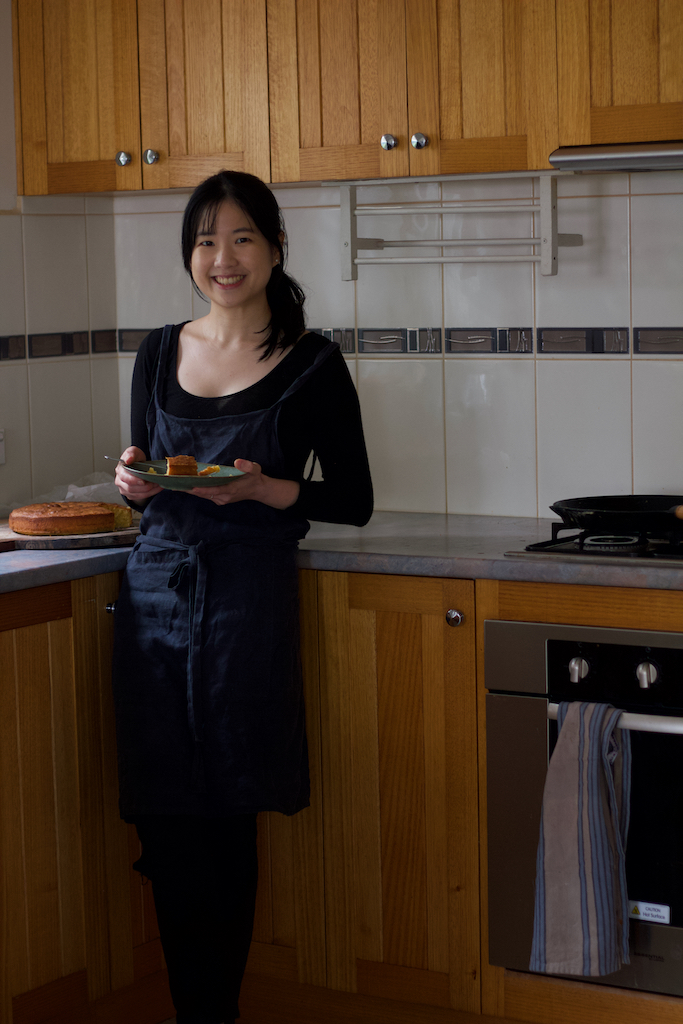
How would you define Singapore cuisine and keep our food traditions alive for the next generation?
Singaporean cuisine is a rich braid of interwoven culinary traditions that naturally bleed into one another. It’s dynamic — deeply rooted in heritage, yet animated by creativity, improvisation, and playfulness in the kitchen. Preserving these food traditions for future generations requires more than just documenting, recalling, and honouring the past; it also means allowing younger cooks the space to make mistakes and carve out their own paths. Because so many of our dishes carry deep cultural significance and are held close to people’s hearts, younger chefs often approach them with a sense of trepidation — afraid of offending others or receiving disheartening feedback. But mistakes are a necessary part of growth. By offering encouragement and being patient with sharing our knowledge, we can inspire younger locals to become more confident, enthusiastic participants in shaping Singapore’s food culture.
Are there any recipes you keep returning to, either for comfort or inspiration? What makes them special to you?
The dishes I make most often at home are the ones that bring people together at the table. Also, after living in Australia and witnessing the effects of climate change firsthand during the bushfires, I’ve become more mindful of the balance between vegetables and meat in my cooking — all while still creating a generous, satisfying spread for friends. One of my go-to dishes for gatherings is popiah. It’s interactive, adaptable to different dietary needs when the components are served separately, and always breaks the ice.
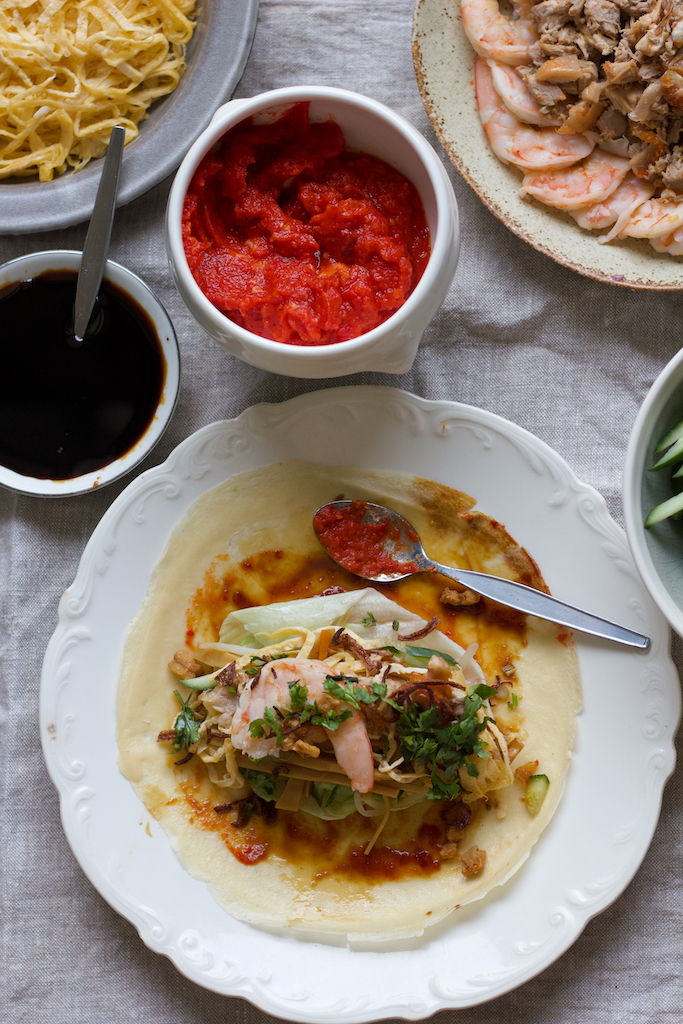
In your view, what’s an underappreciated ingredient in Singaporean cooking—and how would you elevate or reintroduce it to a modern audience?
I’d love to see belimbing make a comeback. It’s something you rarely see these days — if you want to cook with it, you have to forage for it or know someone who grows the plant. When raw, it’s crisp and sharply acidic; when cooked, it turns silky and tender. I especially love it in sambal prawns. I imagine that it would also be wonderful in curries, where its acidity could offer a bright, refreshing counterpoint to the heat and richness.
You’ve made it a point to champion local flavours – was there a turning point when you felt this mission take root in your work?
It really began when I moved abroad — and I think that distance was key to me fully embracing and developing a hunger for Singaporean cuisine. If I had stayed in Singapore, I wouldn’t have felt the urgency to learn how to cook chicken rice when I could easily get an excellent version at a hawker centre for just a few dollars. It also made me realise how ironic it was for a Singaporean not to know how iconic national dishes are made. This work started to feel important when I recognised that many Singaporeans don’t necessarily know how to make these dishes from scratch. For instance, rempahs, the bedrock of our cuisine, are often bought pre-made. When I spent some time with my mom’s domestic helper in the kitchen on my last trip home, she told me that her previous employers were a couple in their 30s whom she didn’t learn much about local cooking from — they only taught her to make pastas and chicken curry using store-bought rempah. I think that’s a shame.
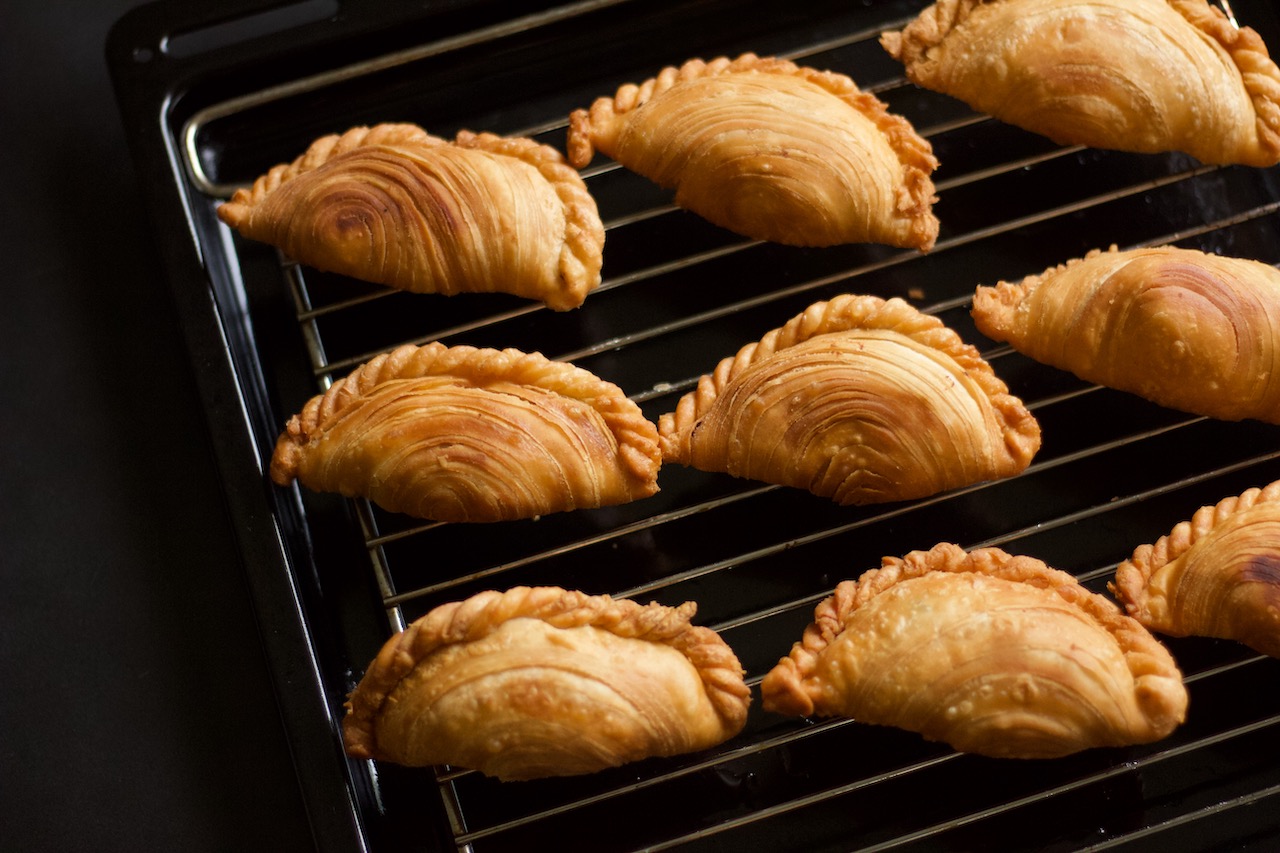
In your culinary journey so far, what has been your proudest moment in preserving or innovating on Singaporean food culture?
Two years ago, I was invited to give a talk — drawing on ideas from my first cookbook, Wet Market to Table — to students and staff from the Departments of Environmental Studies, Urban Studies, and Anthropology at the National University of Singapore. I chose to speak about forgotten plants in Asia: vegetables, fruits, and nuts that have fallen out of favour, especially among my generation and those younger. Many of these ingredients can now only be found at wet markets, as supermarkets no longer carry them due to low demand and limited mainstream acceptance. Others, like Chinese fevervine, have vanished entirely from our markets, surviving only in the wild or in private backyards.
The thing about talks and discussions is that they often remain at a cerebral level — which is why I was especially glad to reconnect with the group a few days later. I couldn’t think of anything more fitting than to visit the market together and cook communally. My hope was for the group to not only recognise a variety of local edible greens at the market, but to also learn how to prepare and appreciate them through cooking and tasting. The dish we made together was nasi ulam, a traditional herbed rice salad prepared by Malays and Peranakans in Singapore. Historically, it made use of a wide range of herbs foraged or cultivated in home gardens for their nutritional and medicinal benefits.
It was an amazing feeling to see a room of 25 people of all ages, each holding a different ingredient, coming together to prepare a single dish. I had initially worried that the flavours of nasi ulam might feel unfamiliar to the younger participants, but everyone embraced the feast with enthusiasm. Hearing students say they felt inspired to make regular trips to the market, or having older participants tell me how long it had been since they’d last helped to prepare nasi ulam, was incredibly heartwarming and encouraging.
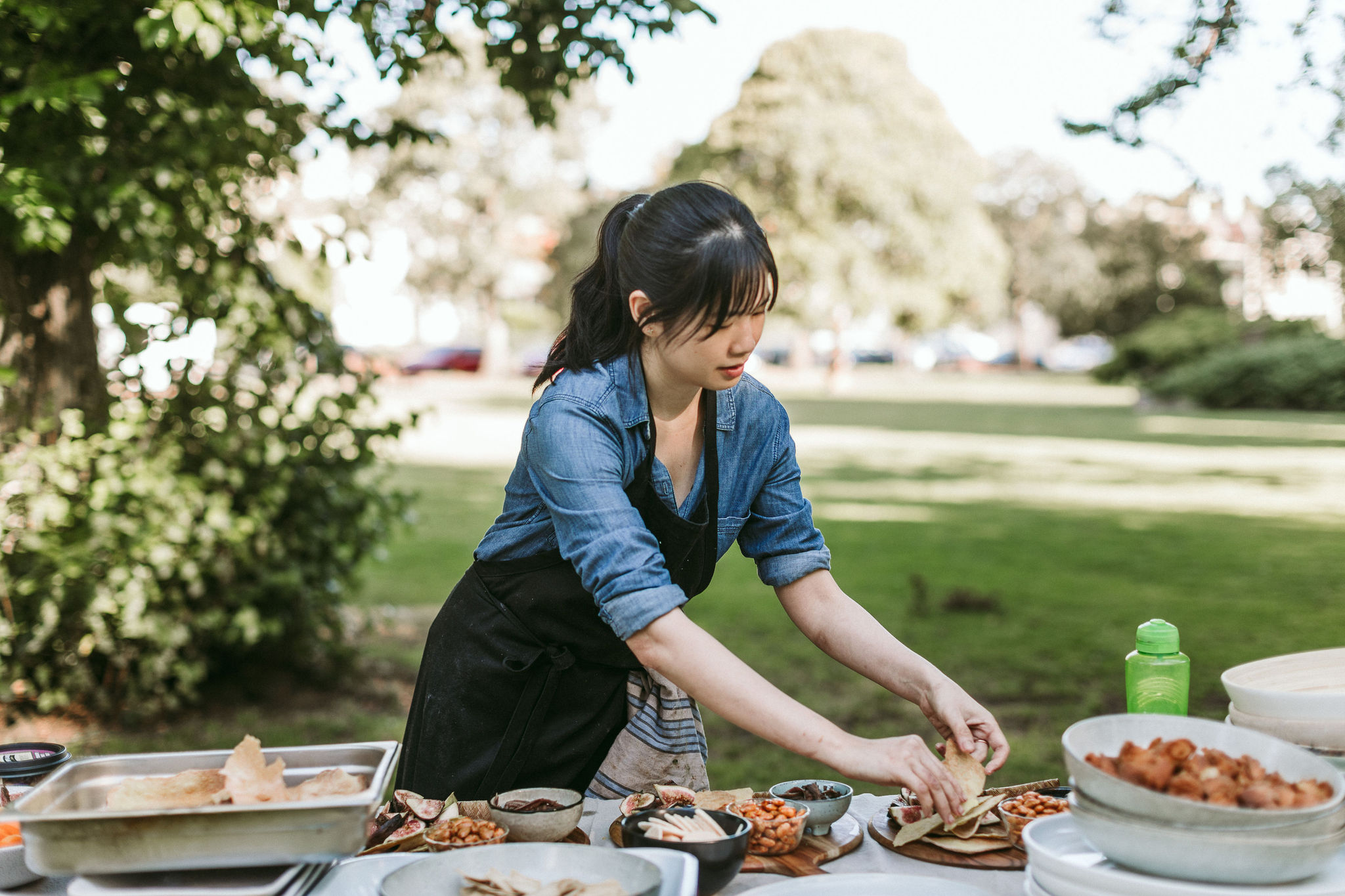
How do you strike a balance between staying true to traditional flavours and experimenting with modern interpretations?
It all comes down to flavour and texture. If it tastes good, why not? For example, now that I live in the Netherlands — where tempeh is plentiful and of excellent quality — I like adding deep-fried cubes of tempeh to my thunder tea rice. I love the nutty flavour and satisfying bite it brings. When I make kueh salat, I’m not afraid to take an untraditional route, like cooking the starch separately from the eggs to avoid curdling. One year, I made multigrain glutinous dumplings as a vegan alternative to traditional bak zhang. The “yolk” was made from mung bean paste — steamed mung beans and pumpkin blended with sugar and homemade shallot oil. I also seared chunks of eggplant, then briefly glazed them with taucheo and coriander powder — a fragrant, salty-sweet combination reminiscent of some families’ versions of Nonya glutinous rice dumplings. I’m also inspired by others, like Suria Insyirah Suparja, who shared a one-pot chicken dish inspired by the flavours of nasi lemak in my newsletter; or Shiny Phua, founder of Ah Mah’s Legacy, who’s constantly pushing the boundaries of traditional kueh. I believe that having a firm grasp of what’s traditional frees you to explore, have fun in the kitchen, and create your own meaningful connection to your heritage.
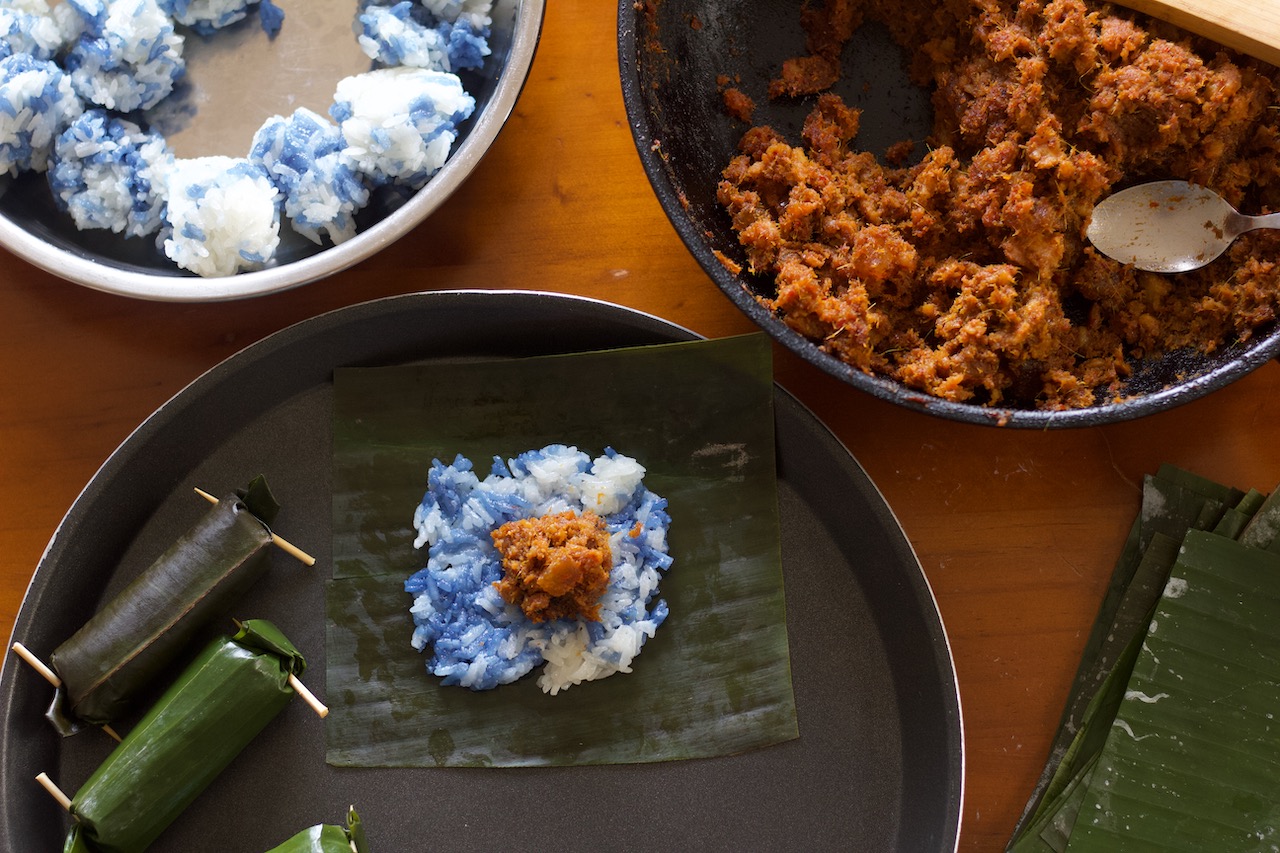
Are there particular hawkers, authors, chefs, or heritage dishes that inspire or influence your work today? Could you give some examples?
Home cooks inspire my work more than ever these days, even though they often don’t share the spotlight with hawkers, cookbook authors, or chefs. Having worked in professional kitchens, I’m familiar with the strong masculine energy and the kind of machismo you often have to project. The emphasis is on consistency, muscle memory, and speed — working almost like a machine. But whenever I’m around a mother or grandmother cooking, I’m reminded of what cooking truly means. It’s not about impressing others or making a statement; it’s about nourishing and pleasing someone with a simple plate of food. I’m currently working on a Singaporean cookbook, and the ease with which older home cooks approach food is both refreshing and, I believe, a much-needed antidote to the pressure many of us feel to meet aspirational standards we see on social media.
If you could pass down one food philosophy or belief to future cooks/ local foodies, what would it be?
Food is never just food. Being an eater and a cook is deeply intertwined with so much more than what’s on our plate — it’s about recognising how our food choices impact the planet and all its inhabitants; appreciating and celebrating terroir—the land we live on and the literal and figurative fruits it yields; reckoning with our cultural identities; and shaping the ways we come together and connect with one another.
